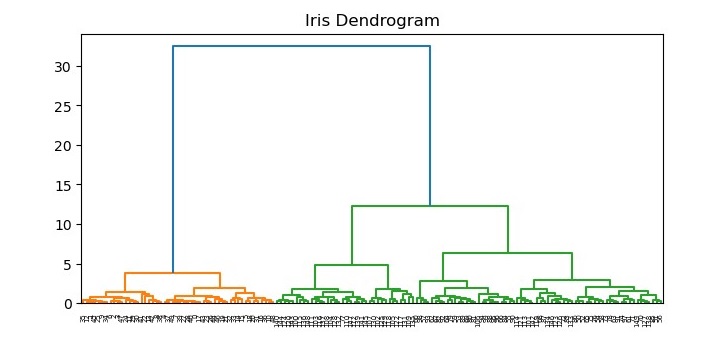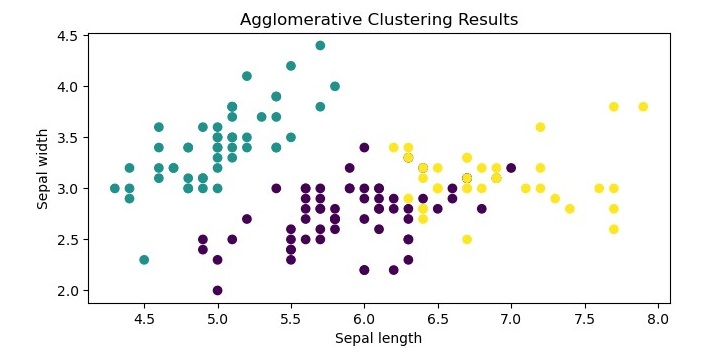
- Machine Learning Basics
- Machine Learning - Home
- Machine Learning - Getting Started
- Machine Learning - Basic Concepts
- Machine Learning - Python Libraries
- Machine Learning - Applications
- Machine Learning - Life Cycle
- Machine Learning - Required Skills
- Machine Learning - Implementation
- Machine Learning - Challenges & Common Issues
- Machine Learning - Limitations
- Machine Learning - Reallife Examples
- Machine Learning - Data Structure
- Machine Learning - Mathematics
- Machine Learning - Artificial Intelligence
- Machine Learning - Neural Networks
- Machine Learning - Deep Learning
- Machine Learning - Getting Datasets
- Machine Learning - Categorical Data
- Machine Learning - Data Loading
- Machine Learning - Data Understanding
- Machine Learning - Data Preparation
- Machine Learning - Models
- Machine Learning - Supervised
- Machine Learning - Unsupervised
- Machine Learning - Semi-supervised
- Machine Learning - Reinforcement
- Machine Learning - Supervised vs. Unsupervised
- Machine Learning Data Visualization
- Machine Learning - Data Visualization
- Machine Learning - Histograms
- Machine Learning - Density Plots
- Machine Learning - Box and Whisker Plots
- Machine Learning - Correlation Matrix Plots
- Machine Learning - Scatter Matrix Plots
- Statistics for Machine Learning
- Machine Learning - Statistics
- Machine Learning - Mean, Median, Mode
- Machine Learning - Standard Deviation
- Machine Learning - Percentiles
- Machine Learning - Data Distribution
- Machine Learning - Skewness and Kurtosis
- Machine Learning - Bias and Variance
- Machine Learning - Hypothesis
- Regression Analysis In ML
- Machine Learning - Regression Analysis
- Machine Learning - Linear Regression
- Machine Learning - Simple Linear Regression
- Machine Learning - Multiple Linear Regression
- Machine Learning - Polynomial Regression
- Classification Algorithms In ML
- Machine Learning - Classification Algorithms
- Machine Learning - Logistic Regression
- Machine Learning - K-Nearest Neighbors (KNN)
- Machine Learning - Naïve Bayes Algorithm
- Machine Learning - Decision Tree Algorithm
- Machine Learning - Support Vector Machine
- Machine Learning - Random Forest
- Machine Learning - Confusion Matrix
- Machine Learning - Stochastic Gradient Descent
- Clustering Algorithms In ML
- Machine Learning - Clustering Algorithms
- Machine Learning - Centroid-Based Clustering
- Machine Learning - K-Means Clustering
- Machine Learning - K-Medoids Clustering
- Machine Learning - Mean-Shift Clustering
- Machine Learning - Hierarchical Clustering
- Machine Learning - Density-Based Clustering
- Machine Learning - DBSCAN Clustering
- Machine Learning - OPTICS Clustering
- Machine Learning - HDBSCAN Clustering
- Machine Learning - BIRCH Clustering
- Machine Learning - Affinity Propagation
- Machine Learning - Distribution-Based Clustering
- Machine Learning - Agglomerative Clustering
- Dimensionality Reduction In ML
- Machine Learning - Dimensionality Reduction
- Machine Learning - Feature Selection
- Machine Learning - Feature Extraction
- Machine Learning - Backward Elimination
- Machine Learning - Forward Feature Construction
- Machine Learning - High Correlation Filter
- Machine Learning - Low Variance Filter
- Machine Learning - Missing Values Ratio
- Machine Learning - Principal Component Analysis
- Machine Learning Miscellaneous
- Machine Learning - Performance Metrics
- Machine Learning - Automatic Workflows
- Machine Learning - Boost Model Performance
- Machine Learning - Gradient Boosting
- Machine Learning - Bootstrap Aggregation (Bagging)
- Machine Learning - Cross Validation
- Machine Learning - AUC-ROC Curve
- Machine Learning - Grid Search
- Machine Learning - Data Scaling
- Machine Learning - Train and Test
- Machine Learning - Association Rules
- Machine Learning - Apriori Algorithm
- Machine Learning - Gaussian Discriminant Analysis
- Machine Learning - Cost Function
- Machine Learning - Bayes Theorem
- Machine Learning - Precision and Recall
- Machine Learning - Adversarial
- Machine Learning - Stacking
- Machine Learning - Epoch
- Machine Learning - Perceptron
- Machine Learning - Regularization
- Machine Learning - Overfitting
- Machine Learning - P-value
- Machine Learning - Entropy
- Machine Learning - MLOps
- Machine Learning - Data Leakage
- Machine Learning - Resources
- Machine Learning - Quick Guide
- Machine Learning - Useful Resources
- Machine Learning - Discussion
Machine Learning - Agglomerative Clustering
Agglomerative clustering is a hierarchical clustering algorithm that starts with each data point as its own cluster and iteratively merges the closest clusters until a stopping criterion is reached. It is a bottom-up approach that produces a dendrogram, which is a tree-like diagram that shows the hierarchical relationship between the clusters. The algorithm can be implemented using the scikit-learn library in Python.
Implementation in Python
We will use the iris dataset for demonstration. The first step is to import the necessary libraries and load the dataset.
import numpy as np import pandas as pd import matplotlib.pyplot as plt from sklearn.datasets import load_iris from sklearn.cluster import AgglomerativeClustering from scipy.cluster.hierarchy import dendrogram, linkage iris = load_iris() X = iris.data y = iris.target
The next step is to create a linkage matrix that contains the distances between each pair of clusters. We can use the linkage function from the scipy.cluster.hierarchy module to create the linkage matrix.
Z = linkage(X, 'ward')
The 'ward' method is used to calculate the distances between the clusters. It minimizes the variance of the distances between the clusters being merged.
We can visualize the dendrogram using the dendrogram function from the same module.
plt.figure(figsize=(7.5, 3.5))
plt.title("Iris Dendrogram")
dendrogram(Z)
plt.show()
The resulting dendrogram (see the following plot) shows the hierarchical relationship between the clusters. We can see that the algorithm has merged the closest clusters first, and the distance between the clusters increases as we move up the tree.

The final step is to apply the clustering algorithm and extract the cluster labels. We can use the AgglomerativeClustering class from the sklearn.cluster module to apply the algorithm.
model = AgglomerativeClustering(n_clusters=3) model.fit(X) labels = model.labels_
The n_clusters parameter specifies the number of clusters to be extracted from the data. In this case, we have specified n_clusters=3 because we know that the iris dataset has three classes.
We can visualize the resulting clusters using a scatter plot.
plt.figure(figsize=(7.5, 3.5))
plt.scatter(X[:, 0], X[:, 1], c=labels)
plt.xlabel("Sepal length")
plt.ylabel("Sepal width")
plt.title("Agglomerative Clustering Results")
plt.show()
The resulting plot shows the three clusters identified by the algorithm. We can see that the algorithm has successfully separated the data points into their respective classes.

Example
Here is the complete implementation of Agglomerative Clustering in Python −
import numpy as np
import pandas as pd
import matplotlib.pyplot as plt
from sklearn.datasets import load_iris
from sklearn.cluster import AgglomerativeClustering
from scipy.cluster.hierarchy import dendrogram, linkage
# Load the Iris dataset
iris = load_iris()
X = iris.data
y = iris.target
Z = linkage(X, 'ward')
# Plot the dendogram
plt.figure(figsize=(7.5, 3.5))
plt.title("Iris Dendrogram")
dendrogram(Z)
plt.show()
# create an instance of the AgglomerativeClustering class
model = AgglomerativeClustering(n_clusters=3)
# fit the model to the dataset
model.fit(X)
labels = model.labels_
# Plot the results
plt.figure(figsize=(7.5, 3.5))
plt.scatter(X[:, 0], X[:, 1], c=labels)
plt.xlabel("Sepal length")
plt.ylabel("Sepal width")
plt.title("Agglomerative Clustering Results")
plt.show()
Advantages of Agglomerative Clustering
Following are the advantages of using Agglomerative Clustering −
Produces a dendrogram that shows the hierarchical relationship between the clusters.
Can handle different types of distance metrics and linkage methods.
Allows for a flexible number of clusters to be extracted from the data.
Can handle large datasets with efficient implementations.
Disadvantages of Agglomerative Clustering
Following are some of the disadvantages of using Agglomerative Clustering −
Can be computationally expensive for large datasets.
Can produce imbalanced clusters if the distance metric or linkage method is not appropriate for the data.
The final result may be sensitive to the choice of distance metric and linkage method used.
The dendrogram may be difficult to interpret for large datasets with many clusters.